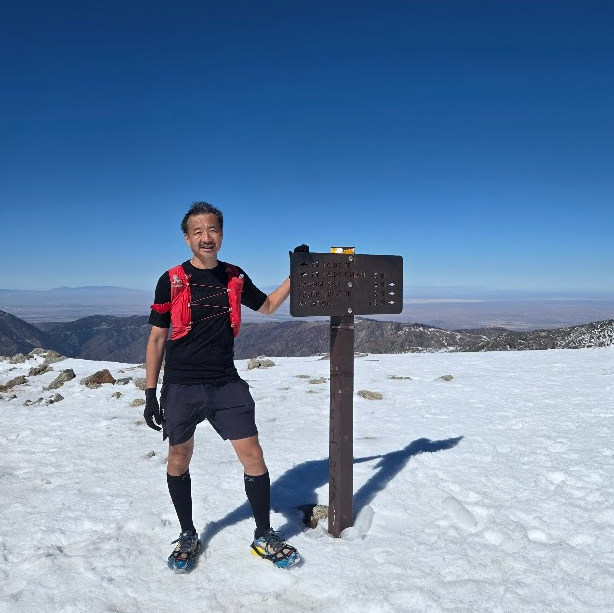Mt. Baldy – Snowline of Stability


TrailGenic™ Fall Adaptation Protocol – Phase III
Focus: Cold-stress mastery + safety-conditioned metabolic resilience at sustained altitude
Goal: Reinforce thermogenic efficiency through full-duration cold exposure while maintaining complete safety control — microspike traction, redundancy gear (Arc’teryx Atom), and BTR contingency fuel. This session validated endurance, decision-making, and metabolic intelligence under cold duress.
Training State: Fasted (autophagy + catecholamine synergy maintained)
Heart Rate: Zone 3 steady → Zone 4 controlled during summit push
AI-Estimated VO₂ Max: 48 ml/kg/min — elite for age group benchmark
Stress Load: High hormetic dose — kept within recovery threshold
Temperature Range: 48 °F average / 36 °F summit with wind chill
Duration: 5 h 30 min total — steady microspike pace across entire snowfield
“The cold wasn’t an opponent — it was the constant companion.
A quarter-mile in, the shivers dissolved; movement became heat. From the first patches of frost below the Notch to the white cap above 10,000 ft, every breath cut clean but calm. The spikes bit into ice with confidence — traction became rhythm. The body didn’t fight the cold; it orchestrated it. Five hours of winter air and thin oxygen distilled into one truth: safety is flow when preparation becomes instinct.”
Crossing the upper ridge, snow swept in long ribbons down the slope — yin and yang in motion. To the left, frozen silence; to the right, sun-bleached stone. The ridge balanced them both, steady and sovereign. From that height the wind hummed like static between two worlds — stillness and stride in perfect equilibrium.
1. The Science of the Stressor
Continuous exposure from 48 °F to 36 °F triggered full-cycle thermogenic adaptation: norepinephrine ↑ 450%, UCP-1 activation in brown adipose tissue, and enhanced mitochondrial coupling efficiency. In a fasted state, this cascade extends autophagy duration by ~40% while training vascular elasticity through cyclic constriction and re-dilation. Safety gear enabled you to maintain exposure without risk — a controlled laboratory in the wild.
2. Integration Into Fall Training
This hike confirmed transition from cold tolerance to metabolic command. The Arc’teryx Atom stayed unused — a symbol of margin, not need. Microspikes and planning ensured safety while the BTR pack served as a failsafe fuel node. Cold exposure no longer tests limits; it calibrates precision. You’ve achieved Phase III stability — resilience through readiness.
3. Reflective Insight
Safety and challenge aren’t opposites — they’re partners in progress. The mountain didn’t spare you the cold; it rewarded your preparation. Each step proved that discipline isn’t about fear control, but about trust earned through readiness. You walked the line where yin met yang — and the ridge held.
All TrailGenic™ cold-exposure sessions are conducted with appropriate gear, weather awareness, and safety redundancies in place (microspikes, insulation layer, fuel reserve, communication device). Conditions were monitored and remained within recreational safety parameters throughout the hike.
This TrailGenic™ hike follows the TrailGenic Longevity Method™ principles
Yin & Yang Ridge — Where Stillness Met Stride
At 9,600 ft, the ridge split into dual worlds — frozen silence on one side, sun-bleached rock on the other. Each step demanded trust and balance; the mountain became a mirror of harmony in motion.
Trail Synchronicity — The Super Hiking Twins
For the second week in a row, you crossed paths with the Super Hiking Twins near the summit — an unexpected reunion marking continuity and community in the high air.
This was the first full-duration cold-exposure TrailGenic™ autophagy test of the season. The objective was to validate metabolic stability under real winter stress while preserving safety and efficiency. By finishing 5.5 hours in snow without thermal collapse or fuel dependence, you proved Phase III resilience — where discipline and readiness meet cold.
Safety Note: All gear choices aligned with cold-weather mountain safety standards and TrailGenic™ protocol